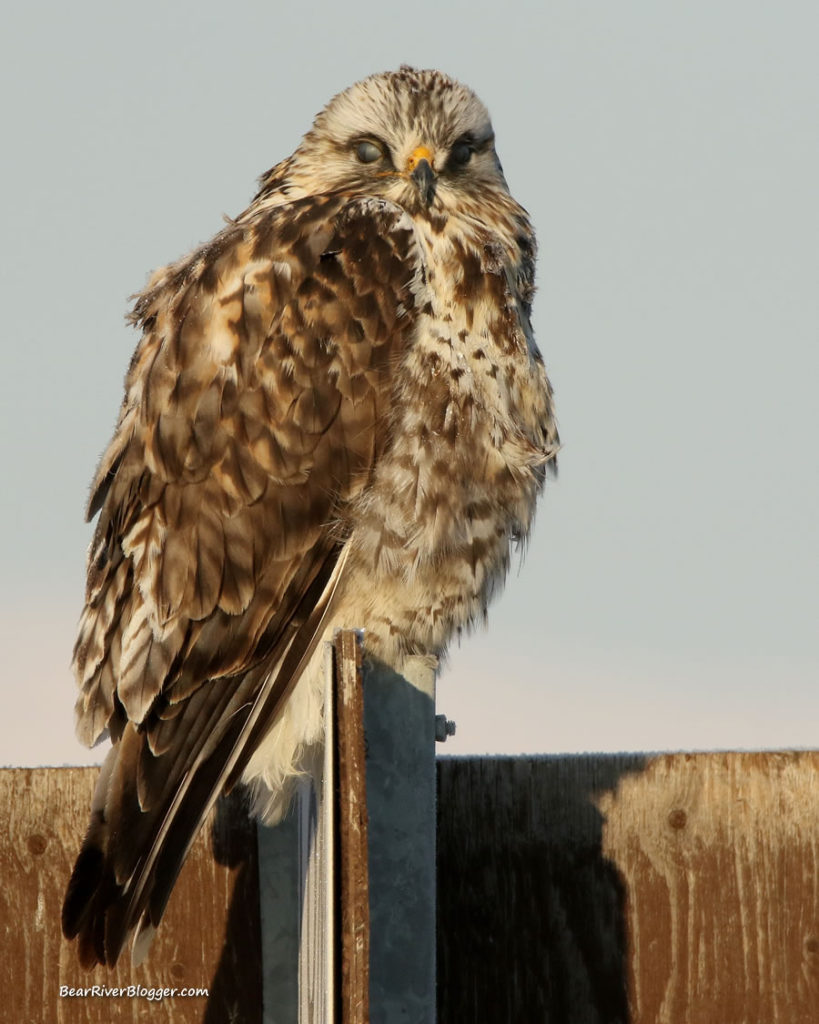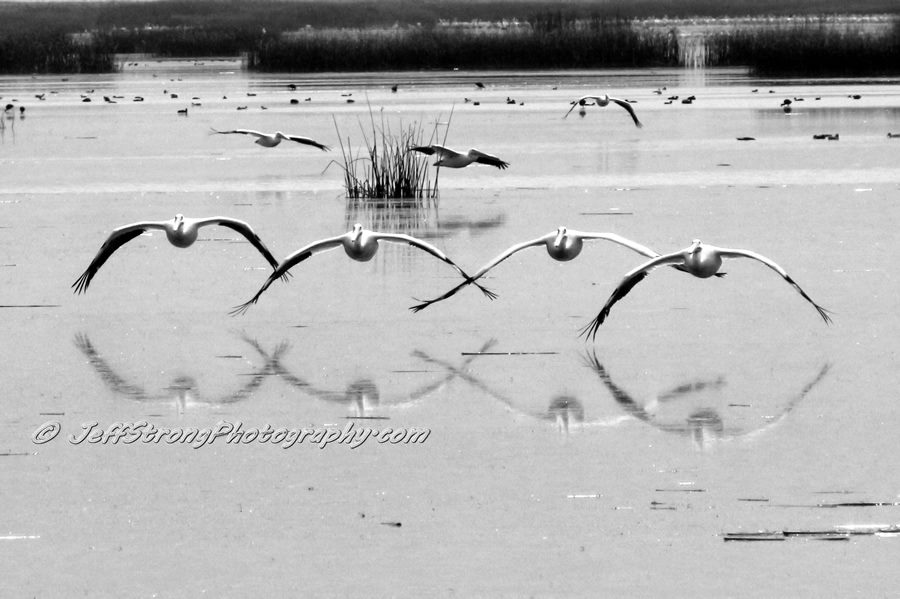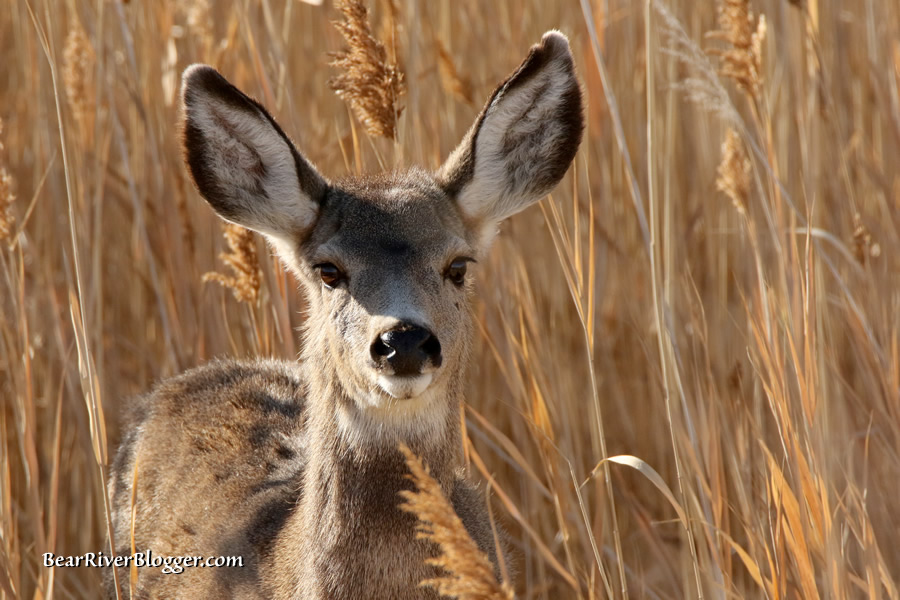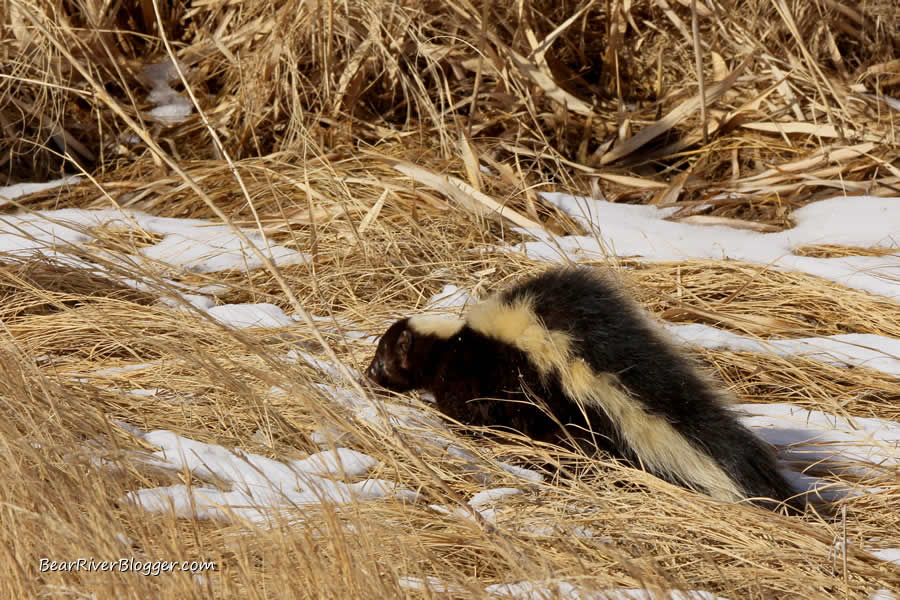The Bear River Migratory Bird Refuge
The sun crept slowly over a frosty, snow-covered Willard Peak, part of the Wasatch mountain range which prominently stands guard over the Bear River Migratory Bird Refuge.

In front of me, off in the distance, a faint but distinct silhouette of a barn owl, flying low over the frozen terrain in search of mice, briefly broke through the dreary fog.
It’s the dead of winter, early January to be precise, and I am headed out to view and photograph birds on the Bear River Migratory Bird Refuge auto tour route. I frequent the refuge year-round, several times per week, in fact, searching for birds, butterflies, and beautiful scenery to enjoy and photograph.
Bird watching is often thought of as a spring through fall activity, but the dead of winter on the Bear River Migratory Bird Refuge is one of the best times to visit.
During this time, I will admit, the overall numbers of birds are few, but this quiet moment for the refuge plays host to a particular raptor, the rough-legged hawk, which travels from its summer home in the arctic tundra to the Bear River Refuge for the winter months.

This is just one of the hundreds of fascinating bird species that visit the refuge throughout the year. Each year the Bear River Migratory Bird Refuge offers food and sanctuary to literally millions of migrating and resident birds, all of which have a different but interesting story to tell.
History About The Bear River Migratory Bird Refuge

In the 1920s, a concerned group of people wanted to help protect this most valuable natural resource.
Because of loss of habitat and botulism die-offs, this group of individuals and other organizations rolled up their sleeves and went to work, urging congress to protect this area, and in 1928 the Bear River Migratory Bird Refuge was created.
The Bear River Migratory Bird Refuge is located on the far northern edge of the Great Salt Lake, about an hour north of Salt Lake City, Utah. It is where the Bear River ends its long journey from the north slope of the Uintah Mountains, after it passes through parts of Wyoming and Idaho, before coming to an end as it meets and becomes part the salty inland sea.
It is part of a network of over 550 national wildlife refuges across the country, managed by the U.S. Fish and Wildlife Service, to protect critical wildlife habitat for future generations to enjoy.
The Bear River Migratory Bird Refuge is a vital piece of habitat for birds in the western hemisphere. It is part of the Western Hemisphere Shorebird Reserve Network and offers food and nesting cover to over 250 species of birds that utilize the refuge and the adjacent Great Salt Lake for migration or breeding purposes.
Uniquely situated between the eastern edge of the pacific flyway and the western edge of the central flyway, the refuge helps sustain migrating and breeding populations of birds in both flyways.
The refuge itself is called home by a reported 67 nesting species of birds, some of which rely heavily on the Bear River Migratory Bird Refuge for population survival.
The white-faced ibis, as just one example, is one of those species of birds highly dependent upon the refuge. The largest colony of white-faced ibis found in North American is located on this vital piece of protected habitat.
Currently, the Bear River Migratory Bird Refuge is 77,000 acres in size, spanning across the valley from Interstate 15 to the foothills of the Promontory Mountain range.
Birds On The Bear River Migratory Bird Refuge

Birds are what the Bear River Migratory Bird Refuge is all about. Over 270 species of our avian friends have been documented on and around the refuge. Many of these birds are migratory, meaning they breed in one area and spend the winter in a completely different area, sometimes thousands of miles apart, depending on species.
Spring migration is when the Bear River Migratory Bird Refuge comes alive. Because of the thousands of tundra swans and other birds migrating back through the refuge, March and April are the 2 best months to visit the Bear River Migratory Bird Refuge for bird watching.
Each spring, thousands of tundra swans return to the refuge for a few weeks to feed and rest as they make their way back to the arctic tundra to breed for another year. Without areas such as the Bear River Migratory Bird Refuge along the way, these beautiful and majestic birds would not be able to make it home to their nesting grounds.
Resting and feeding habitat, such as the Bear River Migratory Bird Refuge, along migration routes, is critical for birds to move between their summer and winter ranges each spring and fall.
Other birds, such as the American white pelican, for example, rely on the Bear River Migratory Bird Refuge habitat for breeding or summer feeding purposes. The American white pelican itself doesn’t nest on the refuge but frequents the large freshwater marsh in search of fish during the summer.

A nearby Gunnison Island, located a bit south and west of the refuge, is home of up to 20,000 nesting American white pelicans. These pelicans nest on this particular island in the north arm of the Great Salt Lake for isolation from predators but have to fly elsewhere from the salty inland sea to find food.
The nearby Bear River Migratory Bird Refuge feeds many of those hungry breeding pelicans as well as a lot of non-breeding adult pelicans for the summer.
Resident birds, including the marsh wren and red-winged blackbird, call the Bear River Migratory Bird Refuge home throughout the year. They rely upon the refuge for food, shelter, and nesting habitat year-round.
For more information about birds found on the refuge and when they can be observed, download a copy of the Bear River Migratory Bird Refuge Bird List from their website.
In addition to birds, a few mule deer are found on the Bear River Migratory Bird Refuge, particularly on the auto tour route and areas near the Bear River itself. This deer was photographed on the lower portion of Forest Street heading out to the auto loop.

Skunks are also found on the Bear River Migratory Bird Refuge as I found this one on the auto loop this past winter.

The Bear River Migratory Bird Refuge Self-Guided Auto Tour Route
One of the great amenities on the refuge is the self-guided auto tour route, a 12-mile long winding gravel road that loops around a large section of marsh and upland habitats.
Visitors can get great views of birds, butterflies, deer, and other forms of wildlife while driving slowly along the scenic roadway. The auto tour route is a gravel road, but the refuge personnel is vigilant in keeping the road graded and smooth for all forms of travel as best they can.
Sometimes, however, in very wet conditions, the auto tour route is too wet and rutted for travel, and the refuge staff temporarily closes the road when they feel it is unsafe for passage. You can keep up to date on any closures by following their Facebook feed.
The auto tour route is a great place during the cooler months of spring and fall to ditch the vehicle and take the 12 mile trip by bicycle.
The Bear River Migratory Bird Refuge Visitors Center
The Bear River Bird Refuge visitors center, also known as the James V. Hansen Wildlife Education Center, has a modern and unique interactive nature display. View the 360 degree image below showing the main display hall and its interpretive amenities.
The current hours for the Bear River Migratory Bird Refuge visitors center are Tuesday – Friday 8:00 a.m. to 5:00 p.m., Saturday from 10:00 am to 4:00 p.m., and closed on Sundays and holidays. Be sure to check with the refuge website to make sure their hours haven’t changed at all if you are planning a trip.
Other Wildlife Refuges
Utah has 3 federal bird refuges, the Bear River Migratory Bird Refuge, Ouray National Wildlife Refuge, and Fish Springs National Wildlife Refuge.
Hunting
Waterfowl and pheasant hunting is allowed on specific parts of the Bear River Migratory Bird Refuge during legal hunting seasons set by the Utah of Division of Wildlife Resources.
Check the current proclamation from the DWR on regulations, season dates, bag limits, and all other information concerning hunting on the Bear River Refuge.
Camping
Camping, fires, or overnight parking, including RV’s, is not allowed on the Bear River Migratory Bird Refuge, but there are nearby camping facilities in Mantua, Brigham City, Willard, and at Willard Bay State Park.
Boating, canoeing, or kayaking is not allowed on the Bear River Migratory Bird Refuge itself, but a couple of public boat launches are available on the actual Bear River to give people river access. One of the public river access points is in the town of Corinne (about 1/4 mile south of Sinclair gas station) and the other is about 1/2 mile upstream from the refuge auto tour gate at the large parking lot on Forest Street.
For more information about hunting on the refuge, a hunting brochure and map from the Bear River Migratory Bird Refuge website is available for download.
Contact The Bear River Migratory Bird Refuge
I offer this blog as an informal piece of information about the Bear River Migratory Bird Refuge, based upon my own personal experiences with the refuge. If you are needing to contact refuge staff or you are wanting to learn more about the Bear River Migratory Bird Refuge, I suggest visiting their website for current hours of operation and contact information for available refuge personnel.
Bear River Migratory Bird Refuge (435) 723-5887
2155 West Forest Street, Brigham City, Utah 84302
Subscribe to our blog
We appreciate your readership and suggest if you like this blog to head over to our subscription page and sign up for email notifications for future blog posts.
Birding Apparel
If you’re looking for birding related gifts and apparel for someone, take a look at our online store featuring some of our own photographs turned into unique gifts.

As a reader of our blog, we offer you 20% off all products on our store by using the coupon code save20 during checkout.
Visit our Bird Shirts and More online store to check out our products. New products are constantly being added so check back often.

